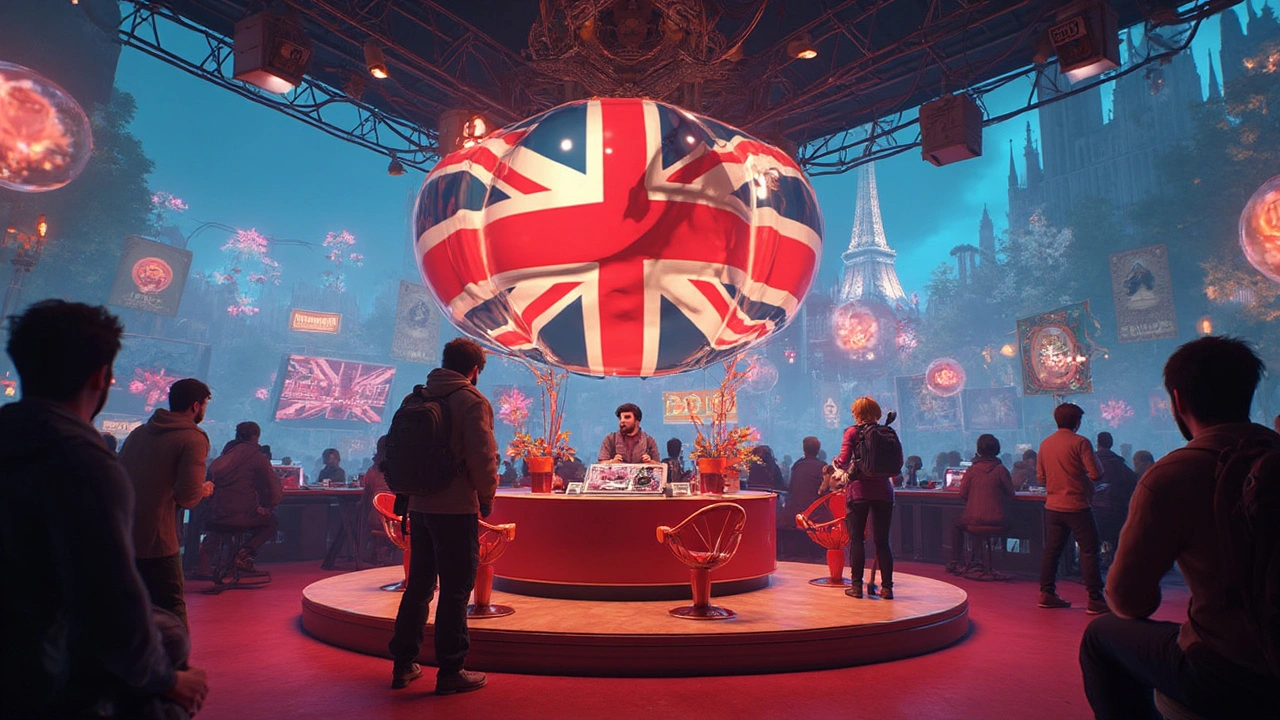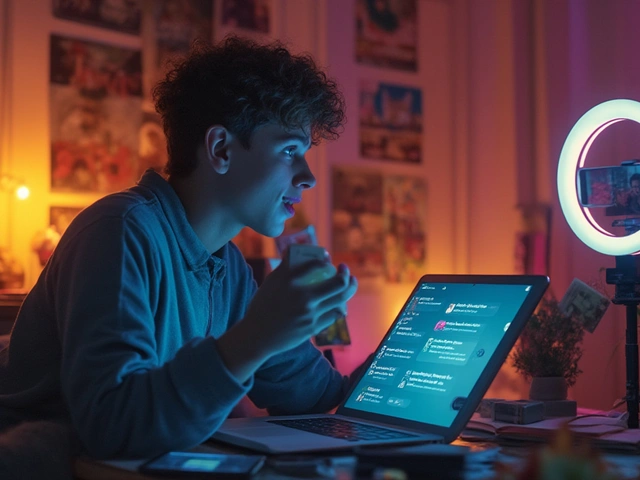Ads aren’t just popping up between YouTube videos or crammed into your social feeds anymore—they’re getting smarter and showing up right inside the games you play. If you’ve ever driven past a billboard in a racing game or noticed a real-brand energy drink in a shooter, you’ve seen this in action. More brands are jumping on board, and it’s not just big companies with cash to burn. Even smaller brands can stake their claim in these virtual worlds.
Here’s the crazy part: recent data shows that gamers actually notice in-game ads more than banner ads on websites. Why? These ads blend right in. A well-placed branded object can catch your eye without pulling you out of the game. If you’re a marketer tired of wasting budget on boring, ignored ads, in-game placements could be your best bet.
- Why In-Game Ads Took Off
- Types of In-Game Advertising
- What Makes Them So Effective
- Top Brands Getting it Right
- Challenges and How to Avoid Annoying Players
- Tips for Brands Looking to Dive In
Why In-Game Ads Took Off
Gamers aren’t just a niche crowd anymore. More than 3.3 billion people played games worldwide in 2024, according to Statista. That’s almost half the planet. Brands realized their old trick—annoying pop-ups—just wasn’t working, so they needed something smarter. Cue the rise of in-game ads.
Games became a favorite hangout spot, especially during the pandemic when everyone was stuck at home. Brands noticed players were spending hours inside games, and if they wanted real attention, they had to go where people were actually looking. The result? A big shift to in-game ads that fit right into gameplay instead of breaking it up.
The data makes the story even clearer:
| Year | Global In-Game Ad Spend (USD) | Active Gamers (billions) |
|---|---|---|
| 2020 | $7.7 billion | 2.7 |
| 2023 | $12.2 billion | 3.1 |
| 2024 | $14.5 billion | 3.3 |
The reason for this surge? Ads inside games just feel more natural. When you’re shooting hoops in NBA 2K and you see a real soda brand courtside, it clicks, because that’s exactly what you’d see in a real basketball arena. Plus, advertisers realized younger folks—especially Gen Z—aren’t watching traditional TV, but they’re playing Fortnite for hours. In-game ads became the smart way in.
The shift also came from the technology side. Faster internet, better graphics, and smarter ad networks made it easier to swap in real-time advertising content based on who’s logged in and even where they’re located. So the sports drink you see in London might be different from what a player sees in New York. That flexibility got brands excited, since they could run targeted campaigns right inside a game session.
All these changes turned the in-game ad space into a marketing hotspot. Brands can finally get their message in front of eyes that aren’t glazed over from endless banner ads elsewhere.
Types of In-Game Advertising
You’ve probably seen more versions of in-game ads than you think, and not all of them are obvious. This world is way bigger than just static logos plastered on the sidelines. Let’s break down the main types so you know exactly what’s out there.
- Dynamic in-game ads: These are digital billboards or ad spaces that can be updated in real time. Think of banners in sports games showing current movie releases or energy drinks. Brands can swap messages for different regions, days, or even times of day, which makes this super flexible.
- Static in-game ads: These ads are ‘baked in’ during game development. For example, a branded delivery truck in a racing game will always be there, no matter when you play. These placements are permanent and great for long-term visibility but can’t be changed once the game ships.
- Advergames: Brands build whole games around their product, like when Burger King released those Xbox games or when you see endless food-themed mini-games on mobile. It doesn’t get more immersive than making the entire game an ad for the brand.
- Rewarded video ads: Ever seen those “watch this ad to get 100 gems” popups in mobile games? These let players choose to watch ads in exchange for in-game perks. They’re popular because people actually pay attention when there’s a reward involved.
- Native and integrated brand content: Instead of obvious ads, some brands get clever by adding their real-world items into gameplay. For example, a famous sneaker showing up as collectible gear in your favorite basketball title. This feels less intrusive and more relevant.
| Ad Type | Usage (%) in Games | Player Response |
|---|---|---|
| Dynamic Ads | 44% | Neutral to Positive |
| Static Ads | 29% | Ignore/Neutral |
| Rewarded Videos | 18% | Highly Positive |
| Advergames | 6% | Curious/Varied |
| Native Brand Content | 3% | Positive |
The rise of these different types is pushing the in-game ads industry past $8 billion in global revenue for 2024. The mix of direct rewards, native brand presence, and dynamic options means there’s something for every brand, big or small.
What Makes Them So Effective
The real magic behind in-game ads is simple: people pay attention when they’re having fun. Unlike old-school banner ads—which most of us scroll past or ignore—in-game ads look and feel like a natural part of the virtual world. A 2023 report from Nielsen found that gamers remembered branded billboards in sports games twice as often as they did regular digital banner ads. That’s wild, right?
One reason this works so well is that in-game ads don’t interrupt gameplay. Gamers see a soda can with a logo or pass a branded stadium sign during a match, but their experience isn’t cut short for a cheesy pitch. This type of placement feels authentic, especially when the branded content fits the setting of the game. That’s why sports, racing, and open-world games use these ads a lot—they blend in so well, most players don’t even realize they’ve been advertised to until later.
There’s another big advantage: targeting. Game companies can use their knowledge about who’s playing to show the right ads to the right people. If you’re a 20-something playing a basketball game and love sneakers, you’ll probably spot ads for cool shoes more often. This precise targeting is what makes in-game ads stand out from traditional ads that throw a message at everyone and hope something sticks.
It’s also hard to skip or block these ads since they’re part of the environment. Banner ads and pop-ups get zapped by ad blockers all the time, but you can’t really avoid a branded race car or a subway poster in a game. That kind of natural visibility is pure gold for brands.
With the rise of multiplayer and live-service games, some ads can even update in real time. So, a billboard in a game could advertise a new movie release this week and show a different product the next. This flexibility lets brands jump on trends fast and keep their ads fresh and relevant to players.

Top Brands Getting it Right
Some of the world’s biggest brands aren’t just experimenting—they’re dominating in-game ads in ways that actually work. These companies know their audience and they don’t just slap logos in random places. Instead, they make the ad part of the whole experience so you hardly notice it’s marketing. Here are a few of the smartest moves in the business right now.
- Coca-Cola has made a splash with collaborations in games like Fortnite, where players could buy special Coke-themed items. The company even ran a campaign inside League of Legends: Wild Rift, letting gamers unlock in-game rewards by scanning codes from real Coke bottles.
- Nike took things up a notch in NBA 2K, building a full Nike Store right inside the game. Gamers not only saw the latest sneaker drops—they could also deck out their avatars in exclusive virtual kicks.
- Wendy's pulled off a bold move in Fortnite by launching the "Keeping Fortnite Fresh" campaign. Instead of just placing an ad, Wendy’s actually joined the game, smashing freezers in virtual burger joints to highlight their mission to serve “fresh, never frozen” beef. The whole thing went viral and drew in millions of views on Twitch.
- Samsung partnered with Animal Crossing: New Horizons to turn players’ islands into digital showcases for their new gadgets. They even let players try virtual phones and home appliances, making the ads interactive and fun instead of annoying.
Here's a quick look at some recent numbers and results that show how these in-game ad strategies pay off:
| Brand | Game | Result |
|---|---|---|
| Coca-Cola | Fortnite, LoL: Wild Rift | Boosted in-game item redemptions by 18%* |
| Nike | NBA 2K Series | Increased online sales by 12% after campaigns |
| Wendy's | Fortnite | 23% spike in brand mentions during campaign |
| Samsung | Animal Crossing: New Horizons | Generated 4.5M+ social media impressions in a week |
*Stat sources: brand case studies from 2024 digital marketing reports.
Want to stand out like these guys? Don’t just drop your logo somewhere. Get creative, fit your ad into the game’s world, and give players something extra. That’s how these brands are leading the way in in-game ads right now.
Challenges and How to Avoid Annoying Players
Let’s be honest—nobody fires up a game hoping to get bombarded with ads. The big challenge with in-game ads is keeping players engaged, not annoyed. Gamers are quick to spot anything that messes with their experience. Too many ads, or ones that feel out of place, can send players running or even hitting the uninstall button. In fact, a 2023 survey from Newzoo found that 51% of gamers said they get turned off by intrusive ads that break gameplay.
One common mistake brands make is dropping in ads that just don’t fit the vibe. You wouldn’t want to see a smartphone billboard stuck in a medieval fantasy world, right? Here’s what usually trips brands up:
- Overloading the game with ads, especially in quick succession.
- Using jarring formats—think loud video ads that pop up in the middle of an intense moment.
- Not matching ad style to the in-game world (like modern products in a historical setting).
Smart game designers and marketers get around this by tailoring ads to fit the environment and the audience. Ads that blend in naturally—like real brands on race cars or sports jerseys—tend to work best. Plus, gamers are way more accepting if they get something out of it, such as extra lives or in-game currency for watching a sponsored video.
| Challenge | Impact on Gamers | How to Avoid |
|---|---|---|
| Intrusive pop-up ads | Disrupts gameplay, increases frustration | Use passive ad placements, reward-based formats |
| Mismatched brand placement | Breaks immersion, feels forced | Align ad style and timing with game context |
| Ad fatigue from overexposure | Makes game feel commercial, loss of user retention | Limit frequency and refresh creative often |
Quick tip: Test ad formats with real players before rolling out at scale, and always listen to feedback from the game’s community. Some games even allow users to control ad settings for a smoother ride. Get this balance right, and ads can become part of the fun instead of a reason to rage-quit.
Tips for Brands Looking to Dive In
If you’re thinking about putting your brand inside a game, don’t just slap a logo on a wall and call it a day. Gamers are quick to spot anything that feels lazy or out of place. Here’s how you can make your ad campaigns in games actually work—and not backfire.
- Know Your Audience: Not all gamers are the same. Racing fans won’t care for the same brands as someone who only plays fantasy RPGs. Check player age ranges, favorite genres, and even their offline interests before picking a game to work with.
- Blend, Don’t Distract: The golden rule of in-game ads is that they need to feel natural. If your soda can shows up in a medieval castle, good luck with that. But an energy drink ad in a modern sports game? That fits. Work with developers who get your vibe.
- Focus on Interactivity: Static billboards are fine, but interactive ads get noticed way more. For example, some brands let players win coupons or prizes by finding branded items in-game. According to GameAnalytics, interactive ads have almost 2x the engagement rate compared to static ones.
- Choose Proven Platforms: Don’t just aim for the biggest game out there—look for platforms with a solid track record for in-game ad success. Services like Bidstack and Admix have worked with Adidas, Ubisoft, and Shell, and can help your brand fit in smoothly.
For extra impact, keep track of your numbers. Good data tells you what’s working—and what’s making players roll their eyes. See the table below for industry benchmarks on average click-through rates (CTR) and engagement rates for different kinds of in-game ads:
| Ad Type | Avg. CTR | Avg. Engagement Rate |
|---|---|---|
| Static Billboard | 0.3% | 2.8% |
| Interactive Ad | 0.8% | 6.1% |
| Rewarded Placement | 1.2% | 10.4% |
Finally, don’t rush. Test your placements with smaller audiences before going big. Collect feedback, read player reviews, and be ready to tweak your campaigns. The more you listen to the community, the better your brand will do. Think of it as joining a party in someone else’s house—you want to be the guest people actually want to hang with.





